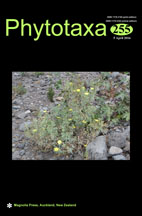Abstract
The known morphological features in identifying common species of foliose Bangiales (e.g., members of Pyropia and Porphyra), which are very few and often overlapping, are recently resolved using comparative analysis of DNA sequences and statistics. Records of foliose Bangiales in the Philippines were historically identified based on morphology. Considering the recent radical changes in the taxonomy among these rhodophytes and problems posed by morphology-based identification, taxonomic re-appraisal of Philippine foliose Bangiales based on critical morphological and molecular studies is needed. This study used plastid rbcL and mitochondrial COI-5P gene sequences to investigate the identity of foliose Bangiales collected in Palaui Is., Sta. Ana, Cagayan, Philippines. Observation of key phenotypes revealed the identity of the collected materials as Py. tanegashimensis. Resulting phylogenetic trees showed placement of our collected specimens into a highly supported Py. tanegashimensis clade from Japan and Brazil. Our molecular analysis also suggested that the Philippine Py. tanegashimensis includes endemic populations distinct from the introduced strain originally reported from Brazil.

